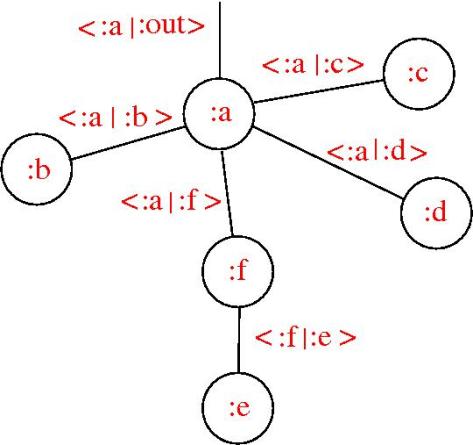Seriously! It’s done. An actor like model, which uses graphic lambda calculus for doing distributed computing (i.e. parallel, asynchronous, no controller) . No evaluation needed, everything is local. There is no signal circulating far through the wires, only small local exchanges. In this respect it resembles to what is happening in chemical reaction networks, but it goes much further than this.
Looks perfectly feasible, needs angel investor.
UPDATE: Let me add a bit more details about this. The awesome thing is not in the actor model side, alone, nor in the graphic lambda calculus or chemlambda alone. Is in the combination of those. The graphic lambda calculus brings the possibility to do distributed computing (and even far away from the usual logic realm, into the field of computing with space, see A me for space). The space which is needed by graphic lambda calculus is, of course, the network. But the network lacks an essential ingredient of space: the proximity relations. This is where the actor model is useful.
Secondly, it is well known that in the usual sense computation needs two ingredients: reduction and evaluation. They appear under a form or another in any computation model I am aware of, excepting the one of graphic lambda calculus + actors! Here, only local (if we rely purely on chemlambda instead of graphic lambda calculus) reduction moves are used, after an initial stage of preparation of the computation.
This has implication into understanding how brains “compute”. Indeed, there are two things (at least, but let’s simplify) which happen in a brain: one is (electrical) signal transmitted (chemically mediated in the synapses) and neural network rewiring (as a form of “learning”). The computation model I propose may be used in two places:
- in the understanding of the computational aspects of the chemical connectome of a brain (by looking for real embodiments of the chemlambda formalism, i.e. by identifying some real chemical molecules which interact as the molecules of chemlambda)
- in the understanding of the rewiring mechanism. The graphic lambda calculus + actors proposes that the rewiring alone is a form of computation, one related to pure local reduction, while the signal transmissions are related more to evaluation aspects. In this respect, neurons (or maybe family of neurons nurtured by one glial cell) are actors and the physical neural network is like an actors diagram.













